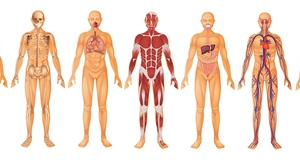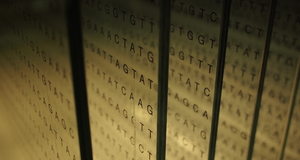Revisiting H.G. Wells' Depiction of Science and Religion in War of the Worlds
By
2010, Vol. 2 No. 03 | pg. 1/1
KEYWORDS:
Every passing decade, the culture of human beings as a whole has been significantly affected by technology and science. Whether it’s something small, like the invention of automatic doors, or something enormously important, like the invention of the telegraph or the discovery of DNA, technology and science change the way we live, and how we view life, all the time. Generally these inventions and discoveries are considered “good;” they are making life easier for us and helping us better our understanding of both ourselves and the world around us. However, to some, science has challenged their way of life. Instead of embracing new perspectives, some religious followers have tended to cling to traditional beliefs and shun what science and technology have to offer. For instance, when Charles Darwin introduced his theory of evolution by natural selection, he was directly challenging the cardinal belief that God created the earth and its inhabitants. Traditional religious believers became outraged because Darwin and fellow biologists were claiming, with hard evidence, that everything they believed in was completely false. A century and a half later, ideas pertaining to evolution and religion are still mutually exclusive for many involved in the argument. With this being said, there is no correct way of thinking. Not one person truly knows why we’re here on earth, and it’s very unlikely that any sort of science or religion will ever tell us the reason. These belief systems are simply attempts on our part to do all we can to understand. However, H.G. Wells’ novel, War of the Worlds, poses an interesting argument regarding this divide between science and religion.War of the Worlds was only written a few decades after Darwin published his theory, yet it shows how quickly and powerfully his theory impacted the world, both scientifically and religiously. In the novel we see our planet invaded and unmercifully attacked by Martians. The protagonist of the novel is depicted as a sensible, intelligent human being who we as readers know ultimately survives the attack because he tells it in the past tense. Through the text, Wells makes it obvious that the protagonist is fully aware of technology and what it has to offer. While watching the Martians within the tripods in the beginning of the invasion, the narrator took note, “I began to compare the Martians to human machines, to ask myself for the first time in my life how an ironclad or a steam engine would seem to an intelligent lower animal.” (52) The narrator, with his clearly scientific viewpoint on the situation, was cool and collected even through the rest of the novel; his survival can be attributed to this disposition. Those who understand technology and science and embrace them are more aware of themselves and the world around them, because whether we like it or not, it is human nature. Because he was aware of technology and its reason for existence, he acted with reason when his life was at stake. Wells presents us with a drastic opposition to this reasonable protagonist when he introduces the curate. The curate’s life was dedicated to religion, and when the Martians destroyed the church at which he preached, as the narrator put it, “this tremendous tragedy had driven him to the very verge of his reason.” (70) The narrator noticed immediately that the curate was not in a right state of mind. By adding this character as the narrator’s unwanted sidekick, Wells is implying that “religion collapses under calamity” (71) and is therefore a weaker belief system than science and reason. Contrasting the narrator and the curate, it is obvious who is more reasonable and less so; Wells uses words like “demented” and “vacant” to describe the curate, whereas the narrator speaks in a “matter-of-fact tone” and is “understanding.” At one point, the curate asked the narrator, “What are these Martians?” (70) and without missing a beat, the narrator replied, “What are we?” The narrator’s perspective on life kept his mind clear, focused, and reasonable. Fast-forward fifty years: the feature film War of the Worlds is released. It was nearly a century after Darwin introduced his theory of evolution, the one theory that changed the entire landscape of science. Since the novel War of the Worlds had been published, serious scientific discoveries were made: DNA, countless fossils supporting evolution, etc. The belief system of science and technology was gaining more and more support over that next half century, so it was inevitable that the characters and plot would be altered in a story that directly addressed the divide between science and religion. In the film, the protagonist was actually a scientist, as opposed to the novel, in which the protagonist was simply a sensible human being with a semi-scientific viewpoint on life. This speaks to where the trust lay a century after Darwin’s theory: science was treated with more respect than religion. The filmmakers go even further with this by portraying the pastor as even more naïve than the curate in the novel. The pastor wished to communicate with the Martians, despite knowing they had murdered several other humans very recently. He claimed that the Martians were “nearer to the Creator” because they were more advanced than we were, and because of this he ignorantly believed they wouldn’t hurt him. The pastor died within a minute of his attempt at communication. Science and reason are given much more credit in the film than in the novel, speaking to the state of mind of humans at that point in time (Americans in particular). The irony in the story of War of the Worlds is that technology is not what inevitably saves the human race. Rather, what defeated the Martians was something that has been here far longer than we have: the natural world. The Martians could do nothing against all of earth’s microorganisms, all the bacteria and cancers and tumors that human beings have learned to conquer over thousands of years. After all the Martians were fallen, the narrator realized that they were “slain, after all man’s devices had failed, by the humblest thing that God, in his wisdom, has put upon this earth.” (168) In the end, our own tools couldn’t get the work done; a strictly scientific viewpoint was insufficient in success. By killing off the Martians this way, Wells is implying that excessive dedication to a belief system will blind people. The curate was far too dedicated to his religion to rationally look at the situation he was in. That is why he was eventually killed: he believed God would save him no matter what. The narrator survived by being aware of both systems of belief but not too attached to one or the other. By looking at both sides of the picture, he was able to view the invasion reasonably and calmly. At the end of the novel, the narrator wrote, “I extended my hands towards the sky and began thanking God.” (170) He obviously had a religious side; he just didn’t let it overtake him in times of stress. During a turbulent time in the argument of science versus religion, the novel War of the Worlds demonstrated that the two did not necessarily have to exist exclusively. The more a person is aware of the possibilities both belief systems have to offer, the more a person truly knows. ReferencesWells, H.G. War of the Worlds. New York: Penguin, 1898/2003 Suggested Reading from Inquiries Journal
Inquiries Journal provides undergraduate and graduate students around the world a platform for the wide dissemination of academic work over a range of core disciplines. Representing the work of students from hundreds of institutions around the globe, Inquiries Journal's large database of academic articles is completely free. Learn more | Blog | Submit Latest in Literature |















